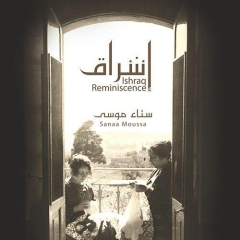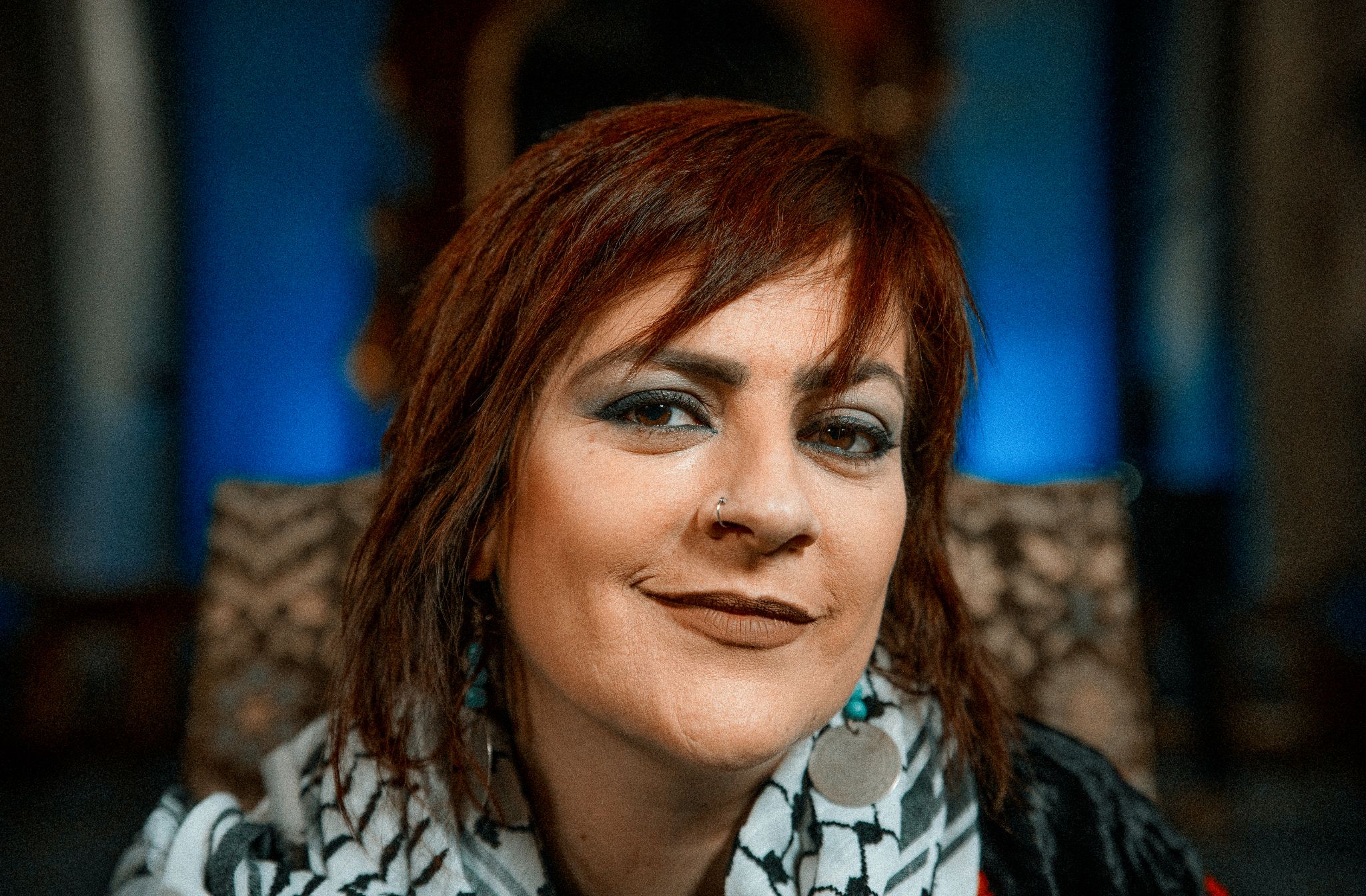Don't Leave: Reviving the folk songs of Palestinian women

For Palestinians, the period of the first Intifada in the late 1980s witnessed a revival and documentation of folkloric songs. There was a drive to collate the dispersed folk heritage that were largely forgotten, plundered, destroyed or lost over the years.
The similarity of the communal spirit, unity and resistance that swept the Palestinian people during this year’s May uprising, matched that of the spirit of the first Intifada as video footage and songs from that period began appearing on social media.
One of the songs that resurfaced to the public conscience after the historic escape of six Palestinian prisoners from the Gilboa prison in September, was Tarweedeh Shmaali, translated from the Arabic as Northern Song or Lover’s Hymn.
Social media personalities such as Subhi Taha of Sbieh.jp recalled the song from the Palestinian popular heritage.
Originally a love song, Tarweedeh Shmaali speaks of longing for a dear one who is far away:
Stay informed with MEE's newsletters
Sign up to get the latest alerts, insights and analysis, starting with Turkey Unpacked
Northern is the wind of home, northern
To the north, their doors open
Tonight, I will send [a message] with the northern wind
It will look for the loved ones and reach them, yaba [oh father]
Our exile has lasted too long and we miss them
Oh bird, go to the loved ones and tell them
Tell them and look for those related to them
And greet my beloved when you visit them
While researchers differ in attributing the song’s origins to the Ottoman or British imperial era, Palestinians often ascribe an element of resistance to the song, as it carries within it the stories and experiences of women communicating with their repressed menfolk.
Preserving culture through music
In his 1966 book, Literature of Resistance in Occupied Palestine 1948-1966, late Palestinian author Ghassan Kanafani explains how Palestinian folk and popular culture preserved the indigenous local culture through oral forms. This related specifically to poetry, literature and storytelling.
But there were always folk songs. Those pieces were embedded in social occasions like weddings, circumcisions, home construction, harvest seasons, or political and momentous occasions. Both before and after the 1948 Nakba, music was that quintessential social activity bringing people together, but also reflecting systems of power.
What is often forgotten is the explicit delineation of Palestinian folklore as being largely preserved by women singers and story tellers, who were often uprooted from their villages and whose names may now be destined to oblivion.
Musicians (L to R): Sahar Khalifeh, Ne’mat Battah, Mira Abu Helal, and Najah Makhlouf (El-Funoun Palestinian Popular Dance Troupe)
The Tarweedeh Shmaali, as researcher, writer and El-Funoun Popular Dance Troupe member Anas Abu Oun recalls, came to light from 40 hours of recordings that he, along with Jordanian composer and musician Tariq An-Nasser and other researchers and musicians, were listening to in the early hours of an autumnal morning in 2013.
The group had gathered to listen through hours of field recordings preserved at the El-Funoun sound archive in Ramallah, in order to select recorded songs for compositions that would be part of their upcoming Zajel album.
The distinct voice of an elderly woman in this version, recorded in the first half of the 1990s, rang out with perfect clarity, singing the story of love and yearning, directed at a loved one to the north of the homeland.
The female songstress, Um Munther, was a local Palestinian woman from the West Bank village of Kobar whose voice was to be immortalised in El-Funoun's 2014 album Zajel.
The origins and evolution of the tarweedeh
It is hard to determine the period this song originated from, although it is most likely around the end of the Ottoman imperial era and the beginning of the British so-called Mandate over Palestine.
Palestinian historian and educationalist Dr. Abdul Latif Al-Barghouthi describes the tarweedeh in his 1979 book, Arab Folk Songs in Palestine and Jordan, as “sad songs full of tears and mourning”.
Often mistakenly defined as a genre, singer Moussa explains that the word tarweedeh simply means “song” in the colloquial language.
“The first time I heard the word was during my fieldwork with women in the Galilee in 2004 where they would refer to songs simply as tarweedeh,” Palestinian singer Sanaa Moussa tells Middle East Eye.
Moussa had set out to research a heritage of song seldom spoken about, while at the same time working on music for her 2016 album, Ishraq Reminiscence, into which she incorporated the songs and sounds of a generation of women who witnessed the Nakba.
Inspired by a song her grandmother used to sing her as a child, she wanted to find out if other women knew those songs or if they were a singular occurrence in the memory of her grandmother.
This rich repertoire she uncovered was mainly sung in women-only settings during weddings, harvest seasons, or while going to the spring or stream for water, or washing clothes. But it was also used to mark joy, births, revolutions, and departure.
The departure of menfolk in those songs was mostly linked to the compulsory conscription of Palestinians into the Ottoman military. Those who left were seldom seen again, prompting the composition of sorrowful songs full of lament.
During the 400 years of Ottoman rule, certain genres of songs evolved like those about the farariyye (defectors) who fled the compulsory conscription into Ottoman armies.
The most popular of these songs is the folk song, Masha’al, as described in Rim Banna’s album, The Mirrors of My Soul. The iconic, late Palestinian singer explained in the album that Masha’al was a handsome Palestinian young man who escaped the wartime Ottoman mobilisation of Safar Barlik of 1913-1918 and who was greatly admired by the Palestinian people.
As the Ottoman soldiers captured him and executed him, women sang this song to keep his memory and story alive.
The song was repeatedly rearranged and sung by many famous Arabic-speaking singers, including Lebanese singer Fairouz. Yet the name of the women who originally composed the lyrics and rhythms of the songs remain unknown.
Singing in code
The lyrics of Tarweedeh Shmaali are jumbled in such a way as to appear coded. This technique ascribes an element of resistance to it, but also places it in a category of similarly encrypted folk songs (often referred to by researchers as mshafarrat, meaning “coded” in Arabic) believed to have been sung by women to their imprisoned loved ones.
“A song reaches further and deeper than a letter, and this is why the women would load the songs with meaningful words, but also at times use code,” says Moussa.
'It is not easy for us to talk about our pain and suffering openly. Many women I worked with wouldn’t sing until after several sessions of talking to them'
- Sanaa Moussa, Palestinian singer
This technique would have been used to evade the prison guards, but was also commonly relied on to confuse non-native Arab speakers - namely foreign invaders over the years.
With multiple foreign invasions, ranging from the Ottoman to the British, followed by the catastrophic uprooting of the Palestinian people with the creation of Israel, Palestinians had to develop a way of expression that wouldn’t be comprehensible to the occupier.
Yet not much of the coded repertoire of songs remains, as Moussa explains; “Our society is secretive in nature. Add to that the fact that many Palestinians went through horrific atrocities during the Nakba and beyond.
“It is not easy for us to talk about our pain and suffering openly. Many women I worked with while preparing for my Ishraq album wouldn’t sing until after several sessions of talking to them,” the singer adds.
One form of coded song is the mlolah, the name referring to the addition of a repeated count of the syllable “l” accompanied by a vowel and which end with the onomatopoeic sound of rweileloh.
London-based singer and composer Reem Kelani describes the mlolah in the 2016 booklet that accompanies her album, Why Do I Love Her, as an onomatopoeic word from the syllable ‘L’, followed by a vowel which is repeated in order to mask the original word.
“Through the seemingly confusing lyrics, the women would convey subversive messages, perhaps informing their loved ones that they would soon be liberated by freedom fighters,” Kelani's booklet reads.
Tarweedeh Shmaali uses mlolah, as does the Palestinian folk song Ya Taali’een ‘ala el-Jabal (Oh you, climbing up the mountain) which Banna re-introduced to the public realm in her 1993 album The Dream.
Palestinian women would sing it to their imprisoned menfolk to convey revolutionary messages of upcoming freedom and liberation.
Banna sang the song in the 1990s and dedicated it and her album to Palestinian political prisoners languishing in Israeli prisons.
Palestinian singer, musician and composer Terez Sliman provided a rendition of Ya Taali’een (as Kelani had also previously done) in her 2016 Mina album, mixing it with Portuguese folk traditions. In the liner notes of her album she adds that these ciphered songs were sometimes used to protect property and alert neighbours about possible threats like robbery.
Wedding songs
Another Palestinian song that employs tongue twisters and a play on words is Daba Ya Galbi Daba (Melt away my heart) which was recently released on the eponymous album, Daba Ya Galbi Daba, by Nawa for Culture and Arts Association in the Gaza Strip.
The album gathers a wealth of songs by Palestinian women in Gaza and documents the intangible heritage that Palestinians are guarding dearly.
The song, or tarweedeh, was also often sung during henna nights and weddings, welcoming masses of celebrating relatives.
Wedding songs are one of the most documented songs, as Palestinian-Jordanian storyteller Sally Shalabi explains, including an array of songs called mhahah which end with zaghareed - a form of celebratory ululation.
The mhahah is the loud recital of congratulatory wishes for newlyweds, used to describe their positive attributes like beauty, wealth and wit. It is often a display of women’s skill in poetically improvising on the spot.
Many of those forms were preserved, and the original zaghrouta (singular of ululation) remains a significant sound marking the joys of weddings, or the mourning of loved ones killed by the occupation.
Shalabi explains that the use of the zaghrouta in the Arabic-speaking region can be traced as far back as the Jahiliyya (the pre-Islamic period) and was used as a battle cry by both men and women. Since then its use has evolved to become attributed to women only.
The zaghrouta, Shalabi says, served as a beacon of news, whether of victory, resistance or joy. Like the tarweedeh, it was often performed acapella, or accompanied by rhythmic drumming on the tablah.
Don’t leave
Another wedding-related tarweedeh is La Tetla’i (Don’t leave), also known as Doleh Safar Doleh (Country to Country) which was rearranged and sung by Moussa in 2010.
The sorrowful La Tetla’i is sung to bid farewell to the new bride as she leaves her parent’s home to her husband’s home.
In some instances, Moussa describes women’s voices merging with the jangling of golden bracelets and repeated hand claps in the original folk tune, as can also be heard on her rendition of the song.
But the number of women who hold within their memory the lyrics of these songs is dwindling each day. This was the case with the unfinished tarweedeh of Badawiyye (The Bedouin Woman) which Lotfiyye Samaan sang to Moussa in Beirut in 2017.
Samaan, who was forcibly displaced from her Galilean village of Sahmata in 1948, was in her seventies when she met Moussa and could only remember a few lines of the song about a bride’s departure:
A Bedouin woman emerged, from the meadow…on her own
The full moon was her brother, and the crescent… her cousin
Palestinian women have, for centuries, been the guardians of knowledge and propellers of struggle through song. And the recent generation of women artists – like Banna, Kelani, Sliman and Moussa – have worked hard to preserve this richness, safeguarding a legacy for generations to come.
These songs form a timeless record of such encounters that provide a mirror onto Palestinian society; their disappearance could mean the loss of an archive of knowledge and the dissolution of an acoustic aesthetic.
This article is available in French on Middle East Eye French edition.
Middle East Eye delivers independent and unrivalled coverage and analysis of the Middle East, North Africa and beyond. To learn more about republishing this content and the associated fees, please fill out this form. More about MEE can be found here.







